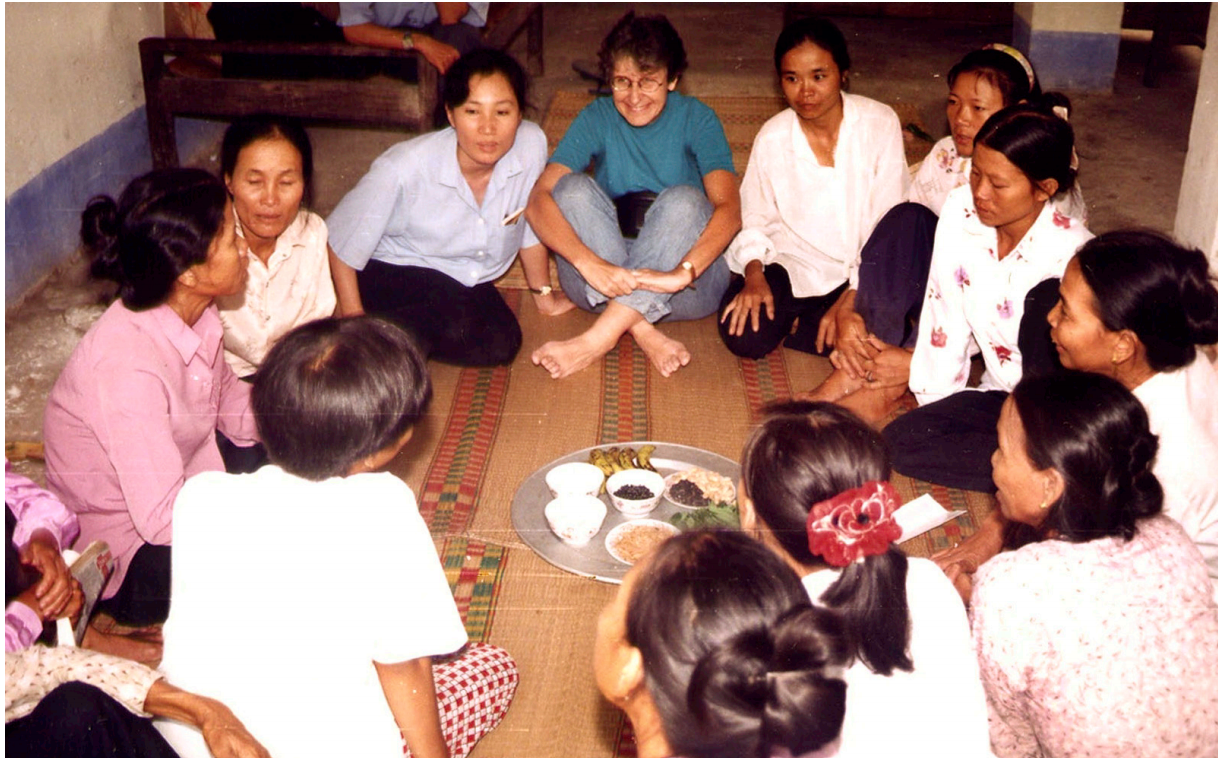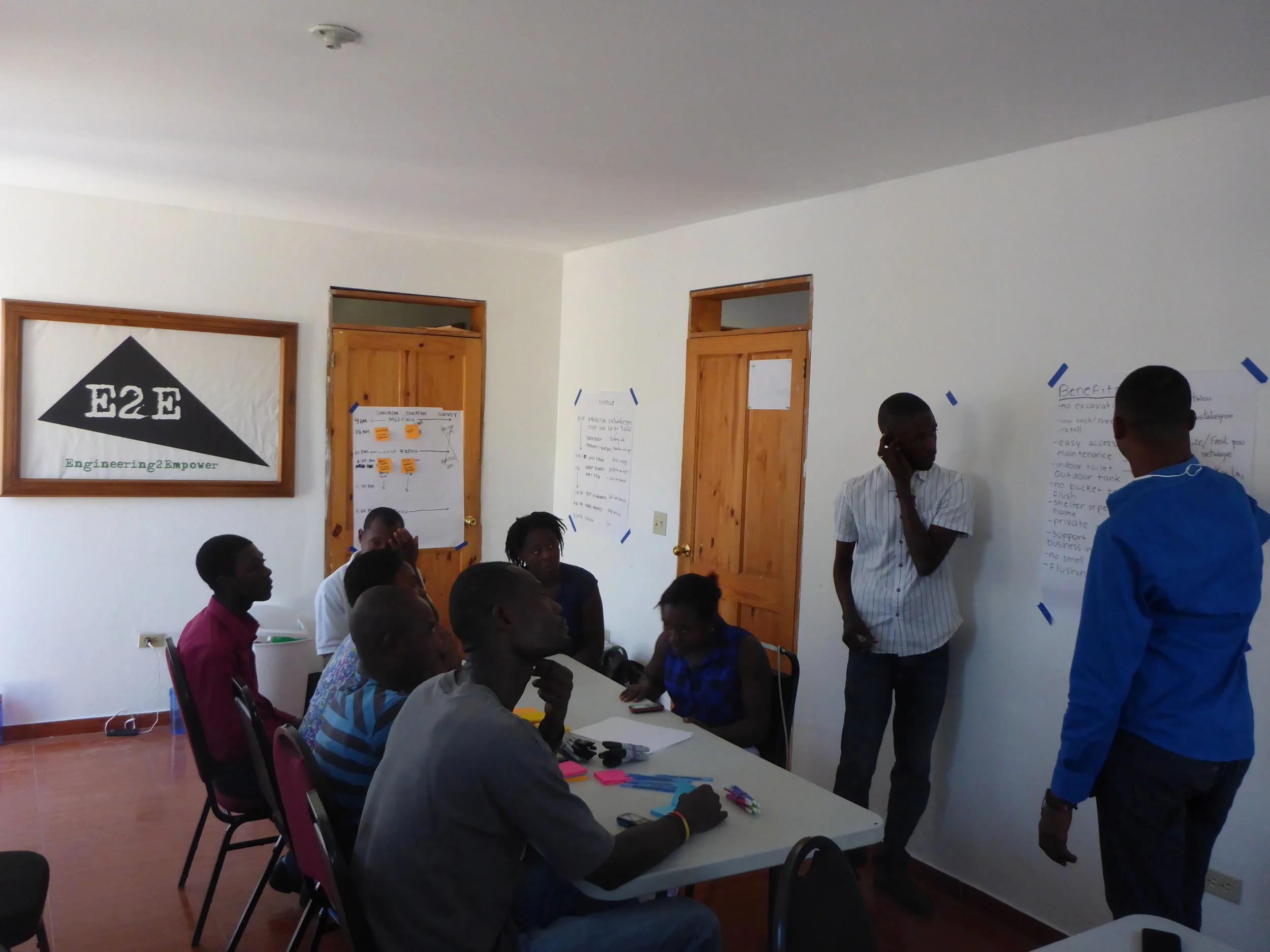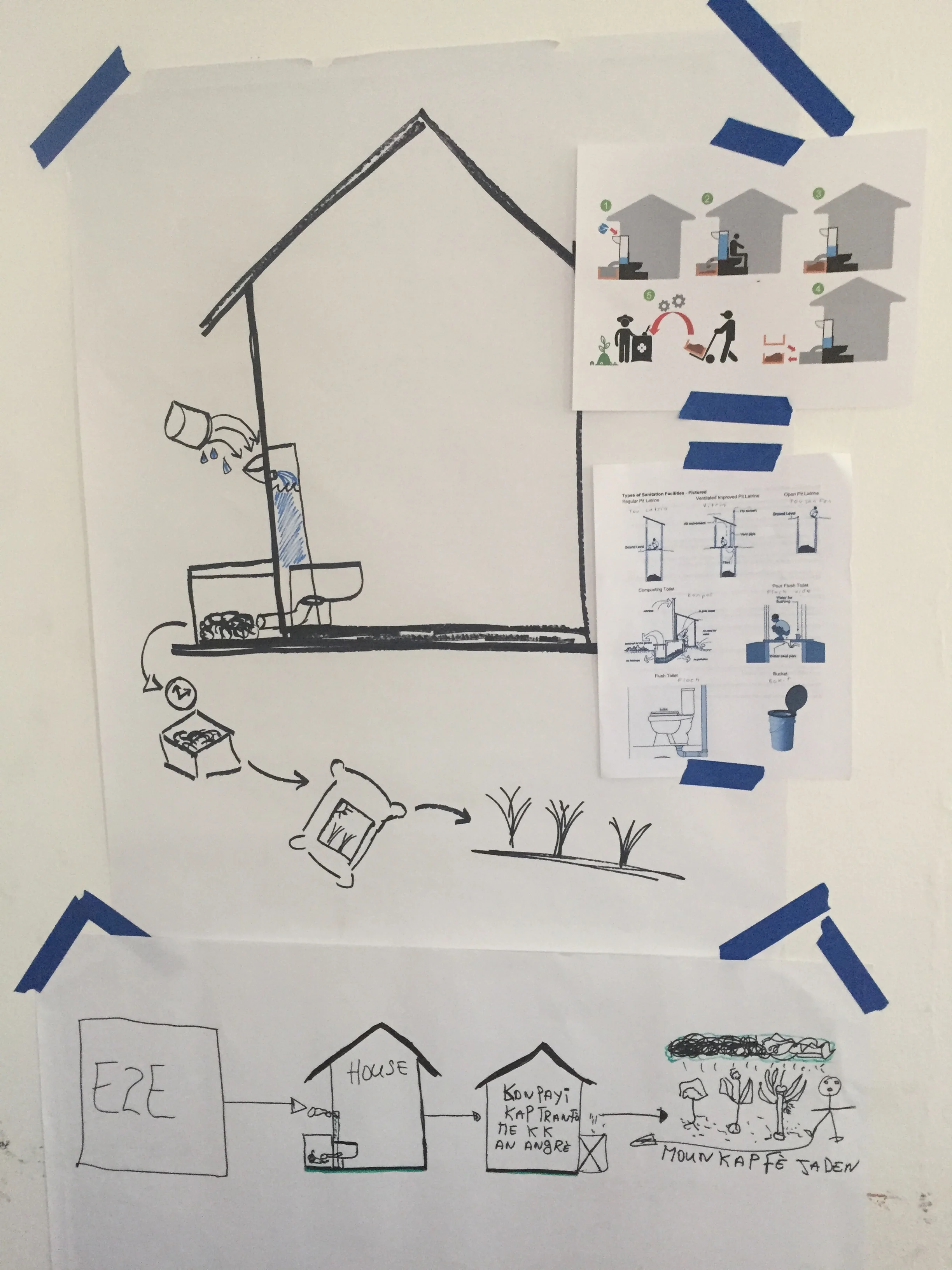In a world of endless complexities and constraints, we can easily be overwhelmed by the seeming intractability of development problems. When attempting to reduce poverty and inequality or improve health and education, the sheer number of things to be done and people to help can cause us to simply freeze up. However, by applying an effective framework of tools, we can unlock our own potential to create sustainable, human-centered change.
Monique Sternin, wife of Jerry Sternin, listening to a discussion on nutrition (Positive Deviance Initiative, Tufts University)
Utilize a Solutions-Based Approach
A solutions-based approach searches for positive deviances in a particular context, observable exceptions that produce results beyond systematic norm. These “bright spots” can be utilized to overcome deficiencies in time, resources and knowledge and immediately concentrate efforts toward a solution instead of dwelling on the problem’s complexities. In the case of Jerry Sternin, an employee of Save the Children in Vietnam, he facilitated an effective program to tackle child malnutrition by focusing on mothers who were managing to effectively nourish their children despite the limits of this particular context. This method revealed low-cost practices some mothers were utilizing that could benefit all families in the village (read more here). In this framework for change, examine the problem to determine why it is so difficult, analyze the positives of what is working, and determine the lessons and actions that can be taken to clone these successes on a larger scale. In a solutions-based approach, the target audience guides you to the right solution, which leads to a more comprehensive, community-owned solution that will more likely be adopted on a larger scale.
2. Drive Change Locally
As an outsider, we simply cannot understand a problem as deeply as those directly experiencing it. My work with behavior change for the Notre Dame Initiative for Global Development project organization demonstrated the dangers of top-down approaches. NDIGD’s Project Ricardo initially explained that contamination was occurring in water transportation from clear spring sources; however, by better listening to the voices of the community, it was determined that the problem actually occurred with water storage within the home. In The Blue Sweater, Jacqueline Novogratz realized quickly that she could not import her Wall Street ideas and practices into Rwanda; rather, she was only successful when she worked with local people who have the necessary knowledge and provide the social infrastructure for impactful change. Locally-driven change requires creating a system that allows locals to act as agents of change.
Community brainstorm workshop around toilet options in Leogane, Haiti (see project page for more details)
Initial brainstorm sketches for the theory-of-change for Ke Poz Twalet
3. Develop a strong theory of change
A theory of change is a specific method of defining how and why a desired social change will occur in a particular context. A theory of change goes beyond the traditional mission & vision (who we are) and programs (what we do) to define howthis vision can be achieved. This method essentially makes explicit assumptions about how your organization believes social change will take place and describes your target population, intended results, time period, activities/strategies/resources, and context. To be effective, a ToC must be rooted in concrete evidence and research and have a specific, measurable results that define success. Passion cannot overshadow evidence (as such the case with the popular D.A.R.E. program) so, even after initial development, a ToC should be constantly tested, refined and improved based upon these outlined indicators of success.
The Snuggie for dogs
4. Create a Marketable Vision
Even the most well-intended and extensively researched project cannot succeed without selling the idea to those with the resources to actually carry out the project. To successfully pitch a project, it is essential to provide a compelling reason for the audience to endorse this project. Underestimating the value of a marketing vision can cause great solutions to fail. For example, the Slanket, a wearable blanket, initially failed until it was re-branded with a stronger marketing campaign into the very successful Snuggie. Ensure the pain points are clearly presented and underscore the core needs and key insights. Exude passion for the project and for the solution. Connect with the audience through a particular powerful feeling by humanizing the issue and building a story.
Karen tribe village, Pha Mon, Thailand
5. Take a Systems Approach
No development issue exists purely in a vacuum and thus, cannot be treated as such. In Mountains Beyond Mountains, Paul Farmer recognizes that health is inextricably intertwined with socioeconomic, cultural, and religious conditions in a region. In addition to just treating patients, Farmer argues “Clean water and health care and school and food and tin roof and cement floors, all of these things should constitute a set of basics that people must have as birthrights” (Kidder 91). Similarly, Novogratz realized time and time again that one specific intervention was not the solution. For example, giving away mosquito nets does not solve the epidemic of malaria. Rather, the solution entailed supporting local manufacturing to create a sustainable, affordable supply, ensuring nets were easy-to-use and improving distribution methods. Driving change requires a holistic approach that addresses all underlying causes
During my undergraduate years, I had the opportunity to meet Nobel Peace Prize recipient Muhammad Yunus. Professor Yunus is internationally recognized for his work in poverty alleviation through social business.
6. Blend Business and Traditional Models for New-Age Development
Despite lofty investments, “traditional aid” models too often fail to create impactful, sustainable change. Rather, community-partnerships and inclusive business models should be blended into this aid model to promote growth in developing countries. Jacqueline Novogratzs argues for this blend, “Philanthropy alone lacks the feedback mechanisms of the markets, which are the best listening devices we have; and yet markets alone too easily leave the most vulnerable behind.” Novogratz’s idea of patient capital blends social and financial returns by empowering local entrepreneurs who understand the issues and treat low-income people as consumers rather than passive recipients of charity. Having access to income provides the freedom of choice and is inherently connected to human dignity. Today’s poor are seeking opportunity and choice to access this dignity and an approach that blends the advantages of both markets and aid can bring real opportunities to people across the world.
A role playing exercise in Leogane Haiti to explore the effectiveness of an experiential prototype via experiencing person-to-person interactions
7. Innovate with Empathy
The design-thinking approach entails believing a solution to poverty-related issues can be found by directly working with the people closest to the problem and asking the right questions. Tim Brown, the CEO of IDEO, explains design-thinking, “It’s not ‘us versus them’ or even ‘us on behalf of them.; For a design thinker, it has to be ‘us with them.’” Reframing the challenge in terms of empathy not only upholds the dignity of the individual but reveals human stories that provide critical insights. In conjunction with enacting solidarity and cross-disciplinary collaboration in problem-solving, the best solutions emerge from a deep understanding of human wants, values and needs.
Cooking at our campsite with our homeowner partner during Appalachia service trip
8. Value accompaniment
Paul Farmer writes, “To accompany someone is to go somewhere with him or her, to break bread together, to be present on a journey with a beginning and an end…The companion says: ‘I’ll go with you and support you on your journey wherever it leads; I’ll share your fate for a while.” Development is not about being the voice of the voiceless; it’s about creating systems that help them have their own voice heard. An accompaniment lens upholds inherent dignity of the human person and enables the poor to have agency in their own fate. When Paul Farmer provided financial, nutritional and emotional support for his patients in Haiti, these changes in the system boosted cure rates, evidence of the value of accompaniment. In Santiago’s Children, while many of author Steve Reifenberg’s agricultural initiatives at the orphanage failed, he was still able to impact the children by accompanying them in their daily lives and when he fell ill and those in the home cared for him, was able to experience accompaniment with the roles reversed. Successfully accompanying others requires: listening that transforms into action, deep empathy, selflessness, taking responsibility for someone’s suffering, a willingness to challenge our own privilege, an understanding of systems of oppression and eliminating any blame or judgement. In the words of Paul Farmer, “True accompaniment does not privilege technical expertise above solidarity, compassion, and a willingness to tackle what may seem insuperable challenges. It requires cooperation, openness, and humility; this concept may infuse new vitality into development work.”
Atop the summit of Haleakalā at over 10,000 feet above sea level
9. Stay persistent
Persistence is the secret sauce to success. View failure as a valuable learning experience to persist through. Jaqueline Novogratz faced a seemingly endless string of failure early in her career. Despite being intimidated and pushed out of her first role and having her report thrown away in her second role, Novogratz took these experiences that would cause many to give up as a constructive lesson, astutely observing how nonperforming organizations try to convince donors of success. Novogratz repeatedly observes the failures of traditional aid and the systematic structures that prevent the poor from having paths of upward mobility. In the spirit of her persistence, she incorporates this view into her theory of change at the Blue Bakery, enabling these women to act as their own agents of change.
Trang An, Vietnam
10. Be courageous enough to tackle the problem
Beliefs and ideals only become real when you have the courage to risk yourself for them. Paul Farmer, Professor Reifenberg, Jacqueline Novogratz, and many other successful development actors demonstrate the rewards of taking risks for something you believe in. Each took risks early in their adulthood, in spite of how others expected them to proceed, that shaped their entire career path. If you don’t like the rules of the game, you must have the courage and resolve to change them.









